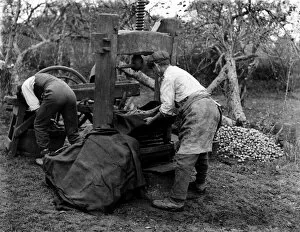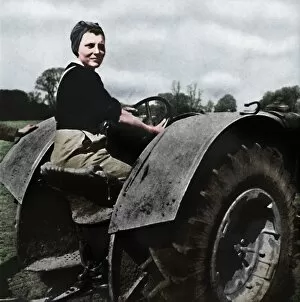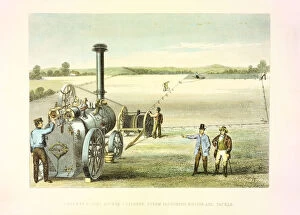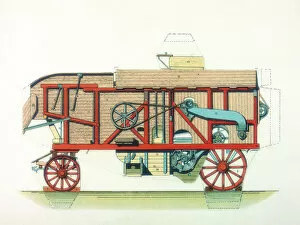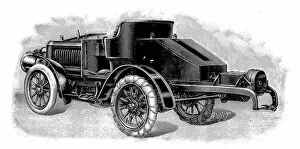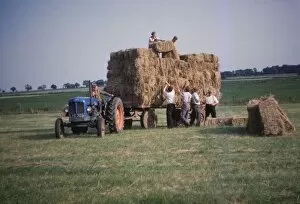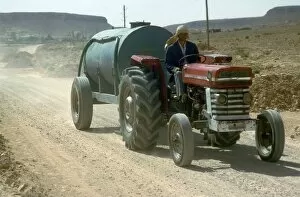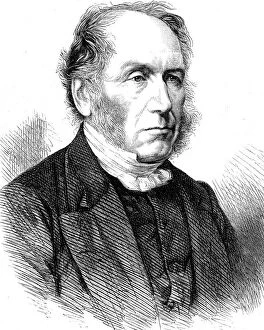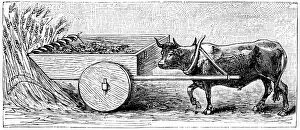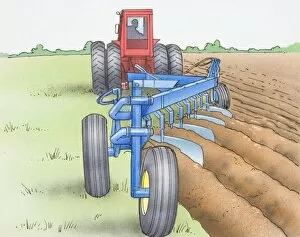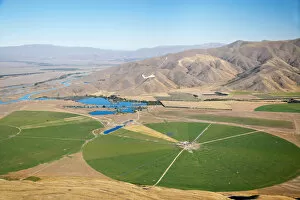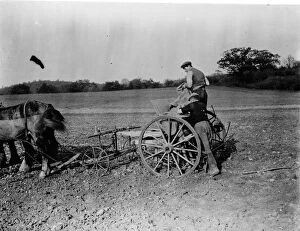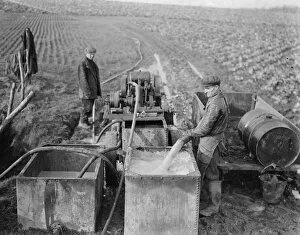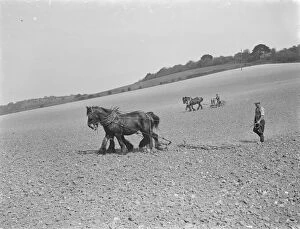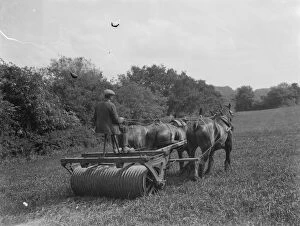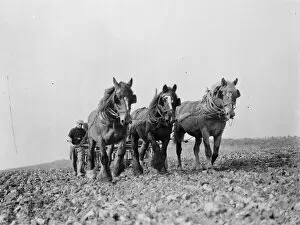Farm Machinery Collection (#5)
"Revolutionizing Agriculture: A Glimpse into the World of Farm Machinery" Step back in time to 1931
For sale as Licensed Images
Choose your image, Select your licence and Download the media
"Revolutionizing Agriculture: A Glimpse into the World of Farm Machinery" Step back in time to 1931, where steam threshing and haymaking by machinery were transforming the agricultural landscape. These innovations brought efficiency and productivity to farmers, allowing them to handle larger crops with ease. In 1939, George Cleaver embarked on a mission to develop 177 acres of raw land in Malheur County, Oregon. With determination and the help of farm machinery, he turned barren soil into fertile fields that would sustain his livelihood for years to come. The Ranch House at Grant-Kohrs Ranck National Historic Site in Deerlodge stands as a testament to the role farm machinery played in shaping our history. It served as a hub for innovation and progress, where ideas were exchanged among pioneers who relied on motor sledges like Herbert Ponting's creation from 1911. As the sun sets over vast fields, combine harvesting takes center stage. The golden hues illuminate this modern marvel of technology as it efficiently gathers crops from every corner of the field. Vincent van Gogh captured similar scenes in his masterpiece "La Route Aux Cypres, " showcasing how farming has always been intertwined with artistry. Centre pivot irrigation near Twizel showcases another advancement that revolutionized farming practices. This ingenious system ensures water reaches every inch of farmland efficiently, maximizing crop yields even in arid regions like South Canterbury's Mackenzie District. From Italy to Southington, Connecticut in 1942 came James Pompey - an immigrant farmer who embraced new methods and technologies wholeheartedly. His farm became a symbol of resilience and success thanks to innovative machines that allowed him to cultivate bountiful harvests year after year. Traveling further south brings us to southeastern Georgia around 1940 when Marion Post Wolcott documented farmers harvesting oats using cutting-edge equipment. These powerful machines made light work out of what was once labor-intensive, ensuring a more prosperous future for these hardworking individuals.

